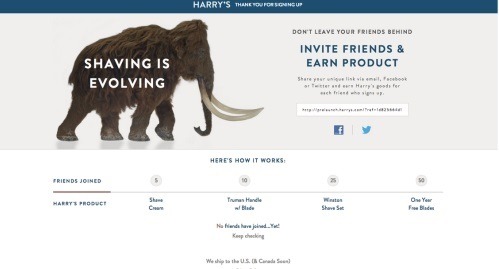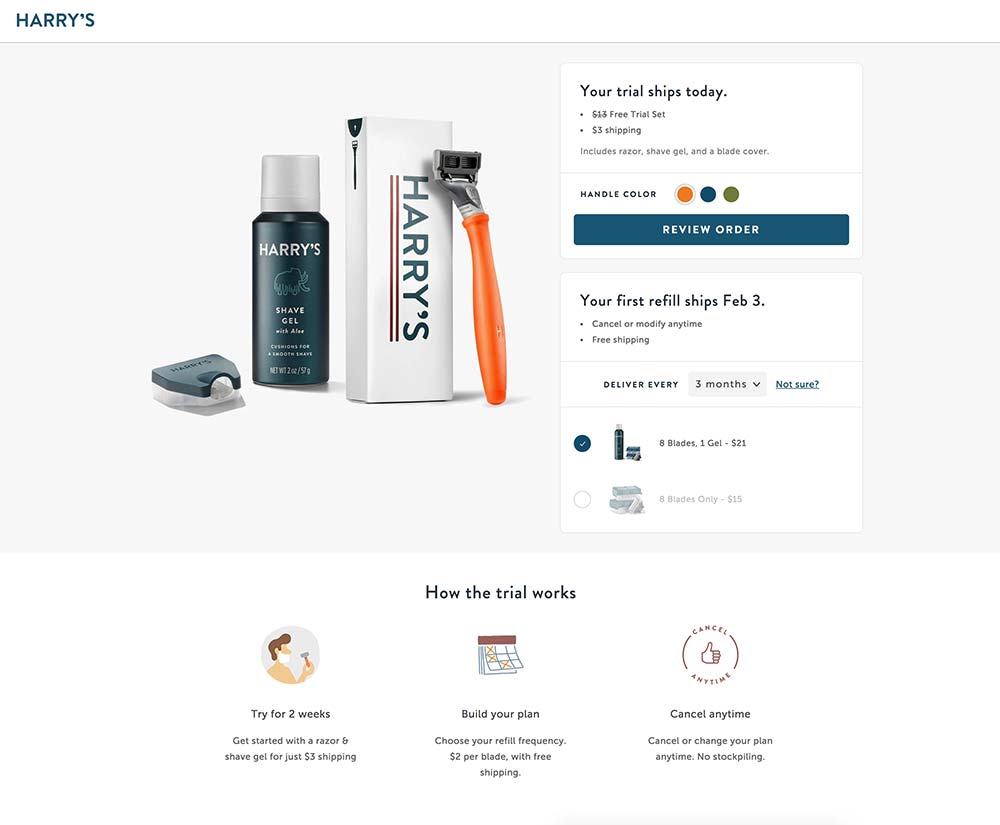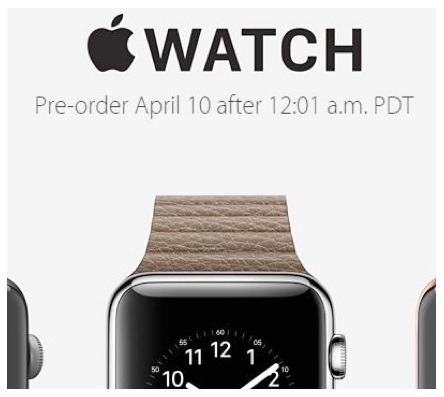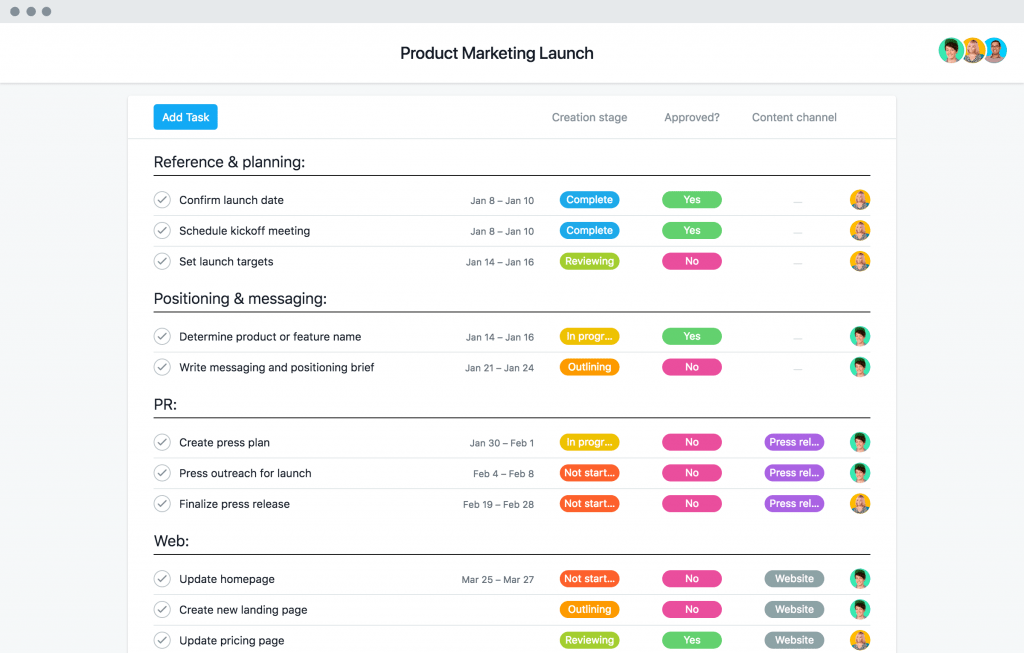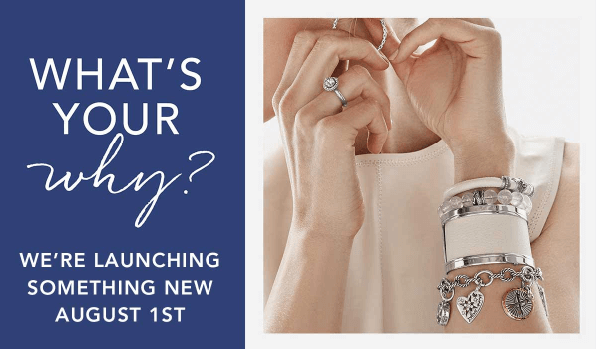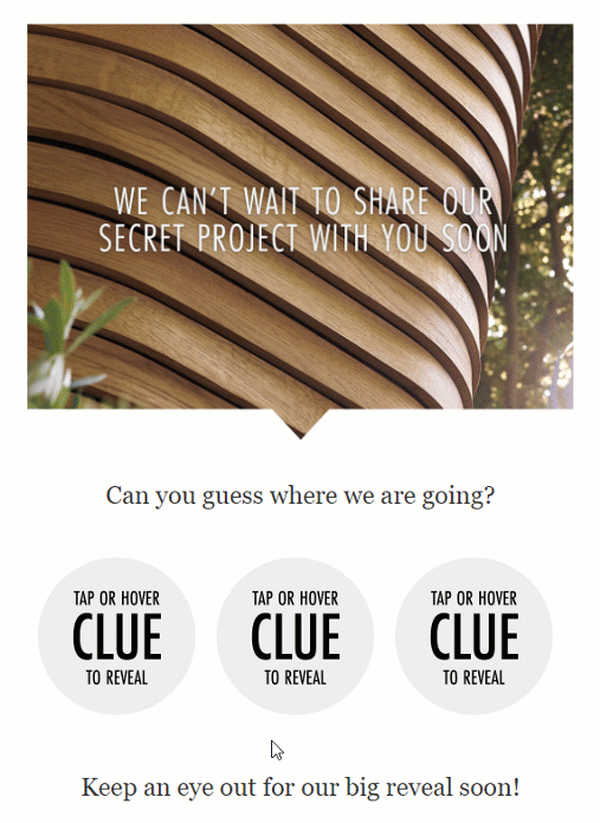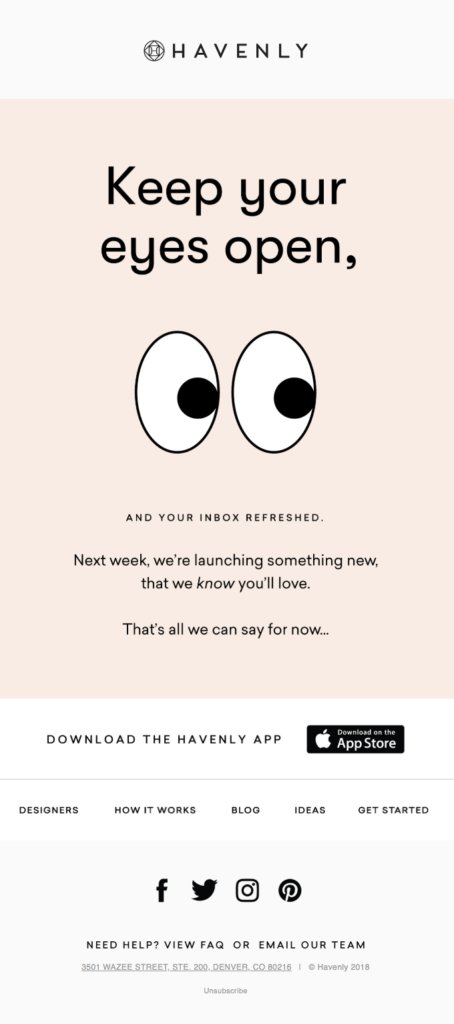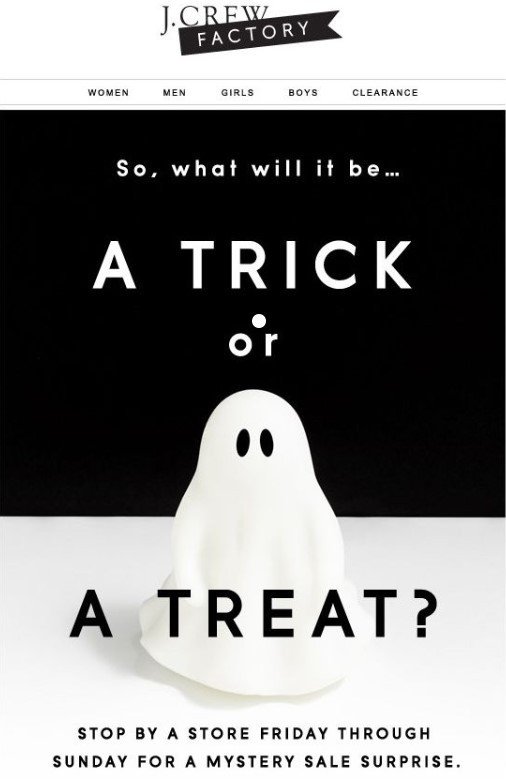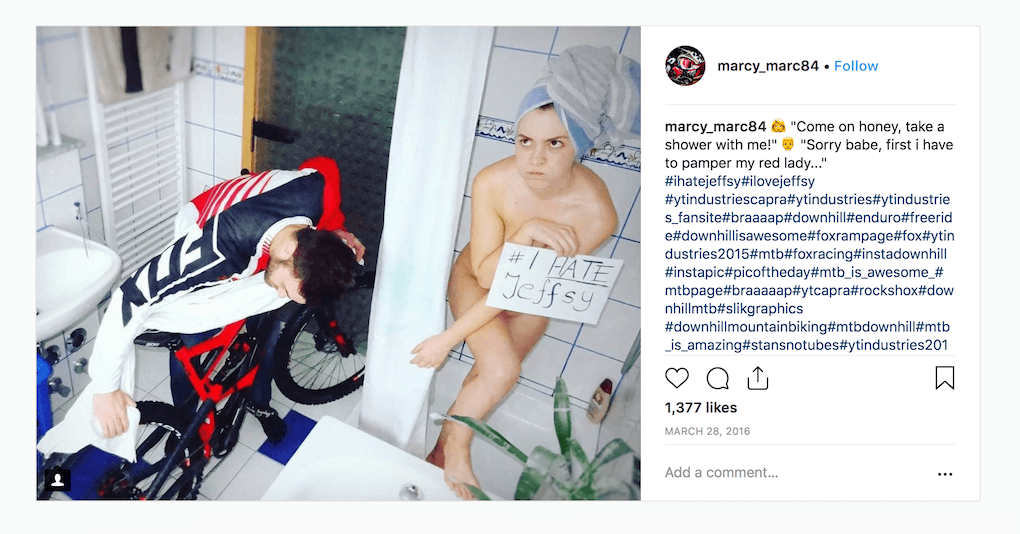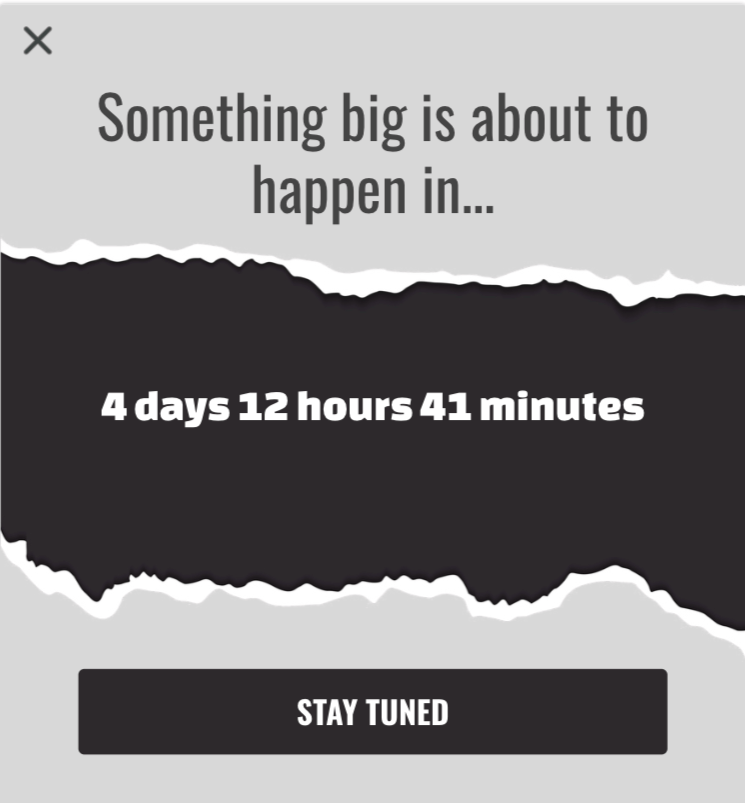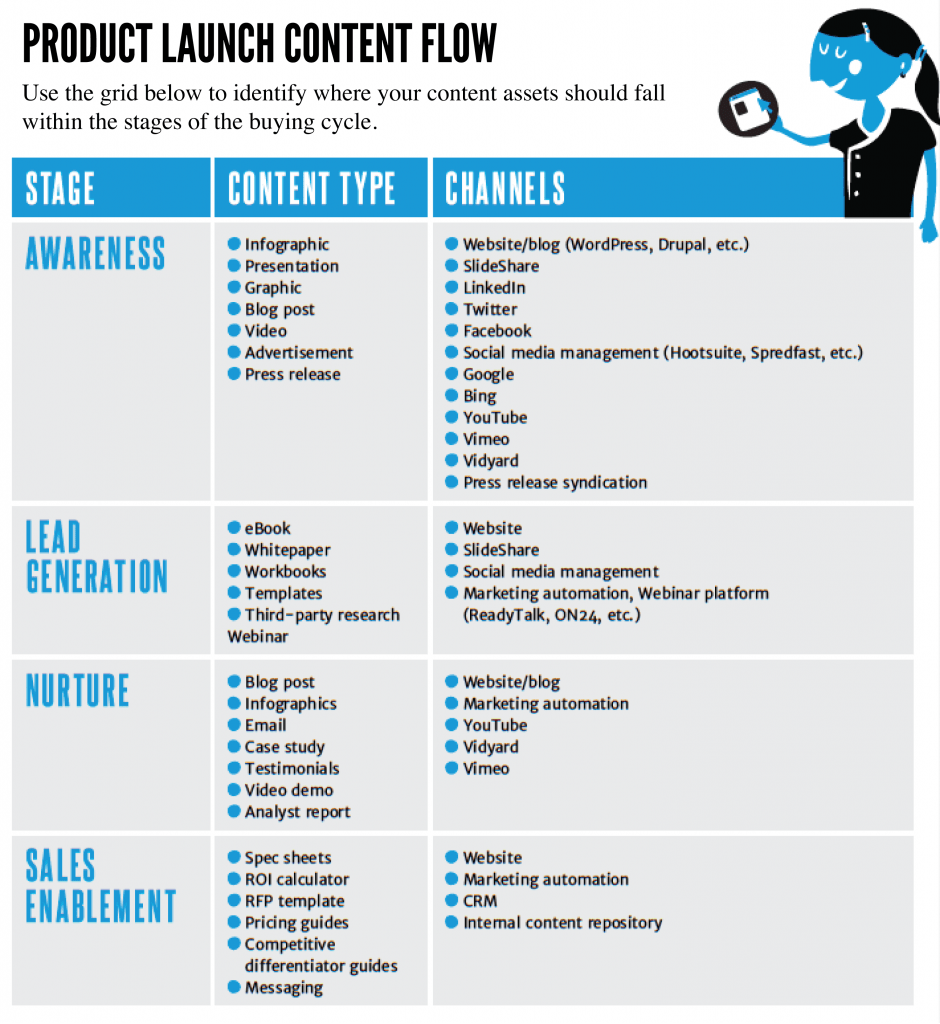Having a good eCommerce new product launch strategy can make or break a new category or variant. Even the most successful online stores need to fine-tune and optimize each product launch, to determine the long-term success of not only the product but the brand itself. The problem is that as an eCommerce business grows, so does the workload, and tweaking roll-out optimizations often takes a back seat in an overall brand strategy – with many stores using a one-size-fits-all approach for new launches. The biggest problem with this is that failed launches not only spell product failures but can actually tarnish your brand as a whole.
The answer? Having a well-thought-out, killer eCommerce new product launch strategy that can be personalized depending on the category, market segment, niche, or product itself. And it isn’t as complicated as we’d believe.
It doesn’t matter how awesome your new product is. If no one sees it (reach) or understands why they need to buy it (message) when they do see it, it’s all for naught.
A good eCommerce product launch is highly strategic and thought-out in terms of testing and marketing to find an optimized plan. This ensures it will not only generate excitement and visibility but engagement before the launch (planning and teasers), during the launch (campaigns and execution), and well after the launch (post-launch customer engagement and experience).
Beginner’s Tip: If you are totally new to eCommerce, at this stage we recommend you head over to our How to Start a Successful Online Business post first before diving into the more intermediate levels that this post provides.
In this post, we take you through the 17 steps you need to build a winning new product launch strategy for eCommerce, with tips and examples, divided into seven stages:
- Pre-Product Launch Planning Admin Stage
- Launch Category Selection Stage
- Product Launch Roadmap Design Stage
- Product Launch Roadmap Design Stage
- Testing Stage
- Launching Stage
- Post-Launch Stage
Stage 1: Pre-Product Launch Planning Admin
Step 1: Define the ‘Why’
Before you create or tweak a new product launch strategy, you want to go back to the ‘why.’ Going back to the ‘why’ will help set the foundation of your product launch. Remind yourself why you created this new product category or version. What pain points does it address or solutions does it offer – if any? Is it an expansion of an already popular category or design? You wouldn’t have the same strategy for a product you designed to answer a new problem your audience may have versus a new product version of a popular design.
Step 2: Get Clear About the ‘What’
What makes your product special? Defining your product’s USP (unique selling point) is a crucial pre-launch step to ensure every aspect of your strategy highlights this. In the same way your brand’s USP sets the tone for your entire store, your product’s USP is key to creating a successful launch through effective planning and messaging. Why? Because it tells a potential customer why they should buy this product.
Take a look at this launch video campaign from NÜTRL Vodka. Can you guess their USP?
If you guessed that, unlike their competitors, their drink doesn’t have added sugar, you are correct. Their core product claim – or USP – is that their drink is simple and only contains vodka, carbonated water, and natural lemon juice – with no additives. Here’s another video from their product launch video campaigns, focusing on their simple USP.
In a nutshell: Your USP will ultimately define your product launch messaging, regardless of what platforms you roll out on or launch category type you choose; but more on that later.
Step 3: Characterize the ‘Who’
Even if you have an established online store with existing customers and target audiences, it’s important to do market research for new products. Why? Because product launches are not just about boosting sales with existing customers, but expanding your reach to new potential shoppers you can turn into loyal customers – which is the very essence of scaling an eCommerce business.
By defining your target audience for the specific product you are launching, you will not only be able to create messaging to boost ROAS of the launch, but it will also help you decide how that messaging will be best received. This is something that Harry’s online store knows all too well. By fine-tuning their audience, they were able to ascertain that email collection was their best launch approach. The results?
They managed to gather 100,000 emails in a single week and include trial offers to convert competitors’ customers to their brand.
In a nutshell: Defining your overall market will help you determine how to market your new product launch and which platforms or mechanisms will offer the best reach, engagement, and ROAS.
Step 4: Narrow Down Your Segments
After you have determined what you are selling, why you are selling it, and who your overall market is, you will want to narrow down your target market segments for your new product launch. Your product will probably appeal to more than one audience segment, and how you target these segments is vital to the success of your launch campaign. Let’s say you’re running a successful online leggings store and launching a new design category. Almost certainly, this new design will appeal to a variety of segments in your overall target market. But depending on how you present the product, your launch marketing messaging should probably be tweaked from segment to segment. In other words, how you market a new legging design to your yoga-loving young adults would be different from your mom customers looking for comfortable athleisure.
Segments will also affect your launch strategy overall. The best way to reach your target audience with a new product will be different for existing customers than for potential shoppers you haven’t converted yet. Therefore, by dividing your overall target market segments from early on, you are better to personalize your launch strategies and campaigns and tweak messaging to suit each segment – both of which are important for improving conversion rates.
You will want to first divide your target market into potential customers and previous shoppers. Both of which you could then segment based on several factors, including:
- Demographics: Segments created based on things such as age, location, and gender.
- Average order value: Targeting previous shoppers based on how much they have spent on your store.
- Interest: Creating segments based on interests and hobbies.
- Remarketing: Segmenting your launch audience based on specific site behavior.
[Source: Smart Insights]
In a nutshell: Here is the thing about established online stores: your target audience will be vast, and not all your customers will be interested in your new product. Segmenting will help you create an effective launch strategy to market new products to potential shoppers more likely to buy.
Step 5: Spy On Your Competitors
Another important step during the pre-product launch planning stage is taking a good, long look at your competitors. Competitive research is an essential component of any marketing strategy, including product launches.
Where are your competitors announcing product launches? What PPC campaigns are they using and with what keywords? How are they positioning new products through their messaging? Are they designing specific launch landing pages? Do they have onsite counters? The more information you can gather, the better. Why? Because looking at close competitors can be a significant strategic inspiration. Here are some competitor research data points to get you started:
- Brand blogs
- SERP pages they appear on and why
- Social media accounts
- Brand mentions online
- Google campaigns and keywords
- Influencers
Bonus Content: How to Spy on Competitors? 13 Tools & Hacks
In a nutshell: Your closest competitors can be your biggest inspiration in terms of getting creative with launch ideas specific to your market and niche or finding new strategies you can test.
Stage 2: Launch Category Selection
Step 6: Deciding Between Pre-Order or Non-Pre-Order Launches
There are two main launch strategy categories you can choose from: pre-order conversion opportunities or a straight launch with a live product. Each has its advantages and disadvantages, and deciding between them will depend on your niche, market, testing outcomes, logistic and management strategies, and the product itself. Let’s look at each more closely.
Pre-Order Launches
These are new product launches that enable customers to pre-order and pay for a product before it’s ‘officially’ on your site. The biggest advantage of this type of launch is that the nature of the category elicits a feeling of urgency and gives the impression that potential customers are getting in on the action early. The second most significant advantage is, of course, pre-sales, which can help financially boost your brand while you are producing the new product – which, in the case of adding a brand new product category to your store (which would mean bigger financial outlays than, say, a design variant of an existing product) can be very beneficial.
[Source: SEMrush]
Shopify Tip: There are many apps and tools out there to help you run pre-sale campaigns, including Advanced PreOrder, that you can use for new product launches and keeping conversion rates stable while you restock.
The key is testing pre-orders for your brand or specific product to see whether they would work before going all in. Let’s say you are launching a new high-end product category on your store and marketing to existing customers who have shopped with you before. Pre-orders could add to the exclusivity vibe when combined with messaging about limited availability or urgency to get there first. But if you’re marketing a high-end product to potential customers who don’t know your brand, they may not be willing to fork out vast amounts of money on an untested brand or product. You will need to test! It’s all about context.
Non-Pre-Order Launches
Alternatively, you can plan a launch that doesn’t allow for pre-orders by waiting for your product to be live on your store – meaning you can immediately fulfill orders from product launch campaigns. The advantage is just that: customers who see the new product pay for it and get it in the normal time frame they would get other products in your store. Additionally, there is no extra admin or logistics involved. In contrast, a pre-order launch would mean additional tracking of who bought what and ensuring nothing falls through the cracks when it’s finally time to fulfill the orders. And if you combine this strategy with pre-launch teasers, you can still create urgency around these launch types.
One of the best examples of a pre-launch campaign showing how to create hype and urgency without pre-sales comes from Dollar Shave Club. Even back in 2012, it was apparent they would be a force to be reckoned with despite launching in an overly saturated market.
Given that their annual revenue is now $100+ million, it’s safe to say the campaign paid off big time. What’s more, they continued this marketing style into future product category launches.
Pro Tip: ‘Notify Me’ Pre-Launches
Think of these as a combination of pre-order and non-pre-order launches. This is a soft- or pre-launch where potential customers can sign up for an email or SMS when the new product is available to buy in your store. Again, this can help you generate buzz around a new product before it’s launched and give your campaigns a sense of urgency. This can be as simple as directing engaged users to a product launch landing page where they can sign up to be notified.
In a nutshell: Both of these approaches can work, granted you have the backend logistics set up to support either process. The trick is to test them for your specific brand and market. Also, what works for one type of product may not work for another, so it’s important to test the strategy first before fully committing. There are few eCommerce brands that opt to combine both, using pre-orders as a way to generate hype – and sales – then continuing or restarting launch campaigns when the product is live on the store to drum up further interest and sales.
Stage 3: New Product Launch Roadmap Design
Step 7: Choose Your Launch Theme
Before you navigate your marketing strategy, you’ll want to decide on the overall theme of your launch. The big picture, if you will. This means taking the information you have gathered in the first steps, such as USP and market segments, to come up with the theme of your launch.
Let’s look at an “oldie but a goodie” launch from Under Armour. Their viral campaign set out to target the female sports market, with the overall launch theme being overcoming naysayers to achieve one’s ultimate goals. This theme was used throughout their campaigns and messaging.
Technically more of a brand category launch than a single product launch, but it proved highly effective, resulting in a 28% increase in women’s sales and a 42% increase in traffic to UA.com.
In a nutshell: Your new product launch theme is the overall story or central idea you will base all your launch campaign messaging on.
Step 8: Formulate Your Launch Timeline and Schedule
Next, you will want to plan your launch calendar. Naturally, this includes detailing the product release date and launch marketing dates for hype, launch, and post-launch campaigns. However, you will also want to set and schedule your stage milestones and plan your CRM processes. Here are the minimum tasks and milestones your schedule and timeline should include:
- Research and development
- New product launch
- Marketing strategy completion
- CRM/logistics plan implementation
- Pre-launch marketing campaign
- Launch campaign
Once you have planned for backend dates and milestones, you can add subcategory scheduling for the actual marketing campaigns you will be running.
Don’t Forget to Brief Relevant Suppliers, Teams, Departments, or Freelancers
Once you have a launch schedule, you will want to make sure your teams, freelancers, suppliers, or departments are looped in ahead of time. There is no use having a sound launch schedule and then not sharing it with departments or teams – such as sales and support, marketing, or logistics – that need to implement these strategies.
In a nutshell: By planning and scheduling every task and milestone for your product launch ahead of time, you can eliminate a lot of the reasons why product launches fail, including being unprepared for demand, products not meeting the right audiences due to poor marketing planning, and not leaving enough time to test your strategies before you implement them.
Bonus Tip: Choose the Right Tools for Streamlining Your Launch
Don’t forget to choose and set up the right tools to help you streamline your new product launch. This should include CRM, product management, task organization, feedback, design, PPC, and on-site marketing tools and apps. Here are some popular tools to get you started:
- Task organization: Trello
- CRM: Zendesk
- Marketing: Mailchimp
- PPC management: Traffic Booster
- Design: Canva
- Pre-Sale Shopify app: Pre-Order
- Coming Soon app: Coming Soon
- Roadmapping: ProductPlan
- Product launch: Figma
- Promotional page design: Instapage
Stage 4: Marketing Strategy Development
Step 9: Outline Marketing Messaging Stages
Before choosing marketing platforms for your product launch strategy, you will want to outline your campaigns’ messaging stages. These can include:
- Teaser stage: These hint at a new product/event and get people excited
- Launch announcement stage: These are campaigns launched about a week before your product release. Think ‘coming soon’ ads meant to create scarcity.
- Hype stage: Here, you build on the excitement by offering a giveaway or other event around launch day to get more significant buy-in, so to speak.
- PR/influencer stage: This is the period where your planned influencer marketing or PR pieces go live. This can either be divided into stages as well or launched on multiple platforms at once.
- New product launch stage: The campaigns you run once the product launches – i.e., is live – on your store.
- Booster stage: After assessing your launch campaign (and sales) metrics you could run campaigns to boost sales such as discount leveraging campaigns or referral campaigns.
You may find that you will run a few of these stages concurrently (according to the scheduling you have set out, as discussed in the previous stage). However, fine-tuning your steps here will help you decide which marketing platform you will be using for which stage. Why? Because some platforms or campaign types will be better suited for different messaging.
[Source: Stripo]
Let’s say you’re running a teaser campaign for a new seasonal design you plan to launch for your successful POD online t-shirt store. Which do you think will get more reach, interest, and engagement – an emailer like the example below or a Google Search ad?
Right, the emailer. People searching Google, for example, are generally looking for something specific and some cryptic text about a product that is still to come, especially if they don’t know your brand, may not work well for you.
That’s not to say Search ads wouldn’t be worth it when combined with remarketing or if you’re a well-established brand where people are actively searching for the launch of your product.
The key is finding the right way – getting the most reach for your buck – to get your different messages across.
In a nutshell: You want to first divide your overall marketing objectives into stages (teasers, launch, hype campaigns, etc.) and then match them to the best-suited marketing platforms to get the desired engagement.
Step 10: Choose Your Marketing Platforms and Campaign Types
Now it’s time to determine which marketing platforms are best-suited for product launches. The short answer is, all of them. The long answer is that each marketing avenue can be effective in reaching your audience and boosting sales of the new product – but it depends on your specific niche, product, messaging, and brand. This is why you should always test your strategy before you launch, fine-tuning and optimizing, so it’s personal to your brand. But more on that later.
Let’s look at each of these must-test marketing platforms for launching a new product successfully.
1. Email Marketing
No new product launch strategy would be complete without email marketing. Not only does this platform allow you to target customers and potential shoppers who already know your brand (increasing your chances of success), but it can be adapted for any messaging or launch stage.
[Source: Sender]
For those of you with robust emailing lists, email marketing offers the best ROAS for product launches. Here is a quick example of how you could break down your email marketing strategy for your product launch to correspond with messaging stages.
Product Launch Email Marketing Strategy
- Email 1: Product teaser 1
- Email 2: Product teaser 2
Pro Tip: Try using your teaser emails to tell a story. For example, you could talk about a struggle (one your new product will overcome) and end with “the solution to this is coming!”
- Email 3: New product reveal
- Email 4: ‘Coming Soon’ email (with or without discounts for limited-time pre-orders)
- Email 5: Pre-launch reminder
[Source: Stripo]
- Email 6: Product launch email
- Email 7: Product reviews email
- Email 8: Booster campaign email (discounts or special offers)
Pro Tip: Put effort into getting reviews for your new product as soon as the first customers receive it. These reviews will not only help boost sales on-site but can be used in email and other marketing campaigns to boost sales in the first weeks of the product being live.
2. PPC Campaigns
You will want to use all your traffic-driving PPC campaign tricks to reach new customers and convert previous customers. This, at the very least, should include Google, Facebook, Instagram, and YouTube ads. But unlike your usual product campaigns, you will want to ensure new product launch campaigns create hype, urgency, excitement, or all three. Here’s a rough outline of what campaigns you should include for new product launches.
Product Launch PPC Checklist
- Google product ads (on launch), promotion, and remarketing teaser display ads
- YouTube teaser, pre-launch announcement, product launch, and promotion video ads
- Facebook teaser, announcement, and product ads
- Instagram teaser, announcement, and product ads
Bonus Content: Full Guide to Facebook eCommerce
3. Content Marketing and Organic Funnel Marketing
It’s not just PPC campaigns you will want to focus on for new product launches. You will also want to work your stages into your social media posting and blog content – which, when done strategically, will feed your content marketing strategies (paid or not) and boost organic traffic for new products as well.
In short, a good product launch content marketing plan will engage with fans, include hashtags for creating online buzz, and provide value.
Whether it’s a blog answering why the new product solves a specific problem or showing how to use it, or a strategic giveaway campaign to boost engagement – the possibilities here are endless. Take a look at this YT Industries #IHATEJEFFSY teaser campaign across various channels that included a competition for the best and most creative photo posted with the hashtag.
[Source: Walls.io]
Needless to say, the campaign was a massive success for the brand, causing a substantial online buzz for their product launch.
Bonus Content: Grow Organic Traffic in 8 Steps
4. PR and Influencer Marketing
Next in your product launch arsenal is influencer and/or PR campaigns. Reaching out to strategic, niche social and industry influencers can help you generate buzz, increase reach to your desired target audience, and build trust. The key here is to go as niche as possible.
For example, let’s say you are launching a new type of yoga pants for fuller figures. It would be more useful to choose a fuller-figured yogi influencer with few – but fully engaged – followers who are right on the money in terms of the target audience than a popular yogi with hundreds of thousands of followers who doesn’t quite fit your audience. Especially if that audience does not have a reasonable engagement rate or doesn’t fit into your ideal audience.
More simply put: you will want to look for micro-influencers on social media and in the blogging/publishing niche. If you’re new to influencer marketing, you can head over to our How to Find the Best Influencers for Your eCommerce Brand post.
5. Offline Marketing Integrations
One of the biggest eCommerce trends happening right now is offline eCommerce, where online stores integrate offline selling such as pop-up stores to personalize brand reach to local communities. It shouldn’t then surprise you that even if you’re only selling online, offline marketing is a great way to expand reach and create buzz through UGC and organic brand ambassadors.
An excellent example of this was the Games of Thrones (no, really, you will see why) season eight marketing campaign where they hid six thrones in a few key locations globally that people hunted for and shared online – of course, going viral.
Yes, it is hard to ignore the dumpster fire that that final season was, but their launch marketing strategy was effective nonetheless. But their disaster season story does reinforce what we said in the beginning: Without a good product, a successful launch is worthless for long-term growth and vise versa.
If you want an example that doesn’t make you relive the most disappointing end to a series in history, then here’s a palate-cleanser from summerfridays – where they integrate offline with online marketing for a launch to create a lot of hype.
Step 11: On-Site Marketing and Page Design
The next step of creating the perfect new product launch market strategy is designing your landing and/or product pages and planning for on-site promotions.
[Source: Sleeknote]
Pop-ups offer a great way to boost teaser campaigns and build hype for new products to already-targeted eCommerce traffic, thus pushing site visitors into your product launch funnel. You will also want to get your new product pages designed and consider whether you’ll need a pre-order landing page.
In a nutshell: Like with any promotion, you will want a variety of marketing platforms to reach multiple shoppers at all the various stages. Also, take a look at your previous promotion metrics to get a starting-off point on which campaigns work better for your specific market.
Step 12: Prepare Marketing and Promotion Assets
Once you have planned your campaigns around every stage and know exactly what messaging you will be using and which platforms you will be pushing these to, it’s time to prepare your marketing assets so that everything is ready to be tested. This means taking the right product photos to fit your theme; shooting teaser, marketing, and product launch videos; and planning headlines, descriptions, and CTAs.
In a nutshell: It’s time to put the creative assets to your campaigns and prepare all your photos, lifestyle images, videos, and copywriting.
Stage 5: Testing Stage
Step 13: Set Yourself Up for Testing Feedback
Now comes the fun part: testing! But first, you need to set up the backend side of things so that you can correctly analyze your test results to finalize your campaign strategy. You should be testing most of your campaigns (and messaging) before going all in. To do that, you want to make sure you have outlined your product launch KPIs and set up for tracking your tests.
Step 14: Conduct a Pre-Launch Messaging Beta Test
The earlier testing you want to do is a pre-launch beta test. The best way to do this is to pick your top, most loyal customers and send them an example of marketing from each stage – getting their feedback with each. You can send out an email to your most loyal customers to offer them to sign up for the beta launch test, rewarding them with a product at the end – a product they can then review, and you can use the review in launch campaigns.
Step 15: Wider Beta Testing of Product Launch Campaigns
Next, you will want to tweak and test your campaigns on a broader audience. This can include running teaser campaigns to small, hyper-targeted segments to ensure that they have potential engagement. This will also help test and tweak your messaging before your product launch roll-out. Here are some more comprehensive how-to guides to help:
- Full PPC Management Guide for eCommerce [+Optimization Tips & Strategies]
- Increase Ad Success with this PPC Task Checklist
- A/B Testing Made Easy
Don’t forget that you will also want to test your on-site promotional assets and landing pages to find the ones more likely to convert.
Step 16: Triple-Check That You are not Set up to Fail
The last thing you will want to do before you launch your product is triple-check you haven’t made any of the most common new product launch mistakes, which most of these steps so far should have covered you for. Here’s a recap on product launch mistakes to avoid:
- Failing to define your ultimate goals from the start of your new product launch
- Not defining your USP and main messaging from the start
- Neglecting to have a backup plan or tools to pivot as needed
- Not making sure your campaigns create urgency or excitement
- Forgetting to test your campaigns and messaging before throwing all your budget in
- Not testing every stage of your launch funnel beforehand, including your landing and/or product pages
Here’s a handy example of a launch content checklist from Neil Patel that you can use as a starting point to triple-check your content flow is set up and tested for each stage.
In a nutshell: Test, test, test! Everything on your product launch strategy at every stage. Not only to assess and optimize things within the campaign to boost results when you go all in, but to fine-tune your messaging to ensure you’re able to generate real buzz for your new product.
Stage 6: New Product Launch
Now, let’s quickly talk about the launch stage. This is when your scheduling is done, marketing plans set, and you push the ‘go’ button on all your campaigns. You will want to keep a very close eye on campaign metrics, tweaking if necessary, to improve success as the campaigns progress. Also, you want to stay on top of your fulfillment and support teams to make sure everything is running without a hitch or quickly fix problems that slow down product release.
Stage 7: Post-Launch Product Strategy and Assessment
In short, your post-launch strategy is as essential as your pre-launch planning. Why? Because it will offer invaluable insights that you can then use to drive sales for new products later down the road.
Step 17: Do a Post-Launch Assessment
The final step of your eCommerce new product launch strategy is your post-launch assessment, which includes engaging with customers and potential shoppers and looking at the metrics.
1: Engage With Humans
This is where you engage directly with customers to get their feedback – not only on the new product itself but the marketing that brought them to your product page in the first place. You may also want to do a post-launch survey that targets those who visited your new product or promotional landing page but didn’t buy the product in the end. This can be hugely beneficial for creating more converting marketing messaging going forward.
2: Engage With Bots
Next, you will want to take an in-depth look at your whole launch campaign’s metrics and data from start to finish. Ask yourself: Were your KPIs met? Which campaigns generated the most engagement, reach, or sales, and what was the messaging of these successful campaigns? Here are a few guides that will help you do just that:
- Using Google Analytics Intelligence to Ask the Right Questions
- Google Analytics For eCommerce: A Complete Beginner’s Guide
- The Biggest Analytics Lies and How to Spot Them
- 54 Top eCommerce KPIs to Monitor for Max Success
—
There you have it, everything you need to create a winning eCommerce new product launch strategy in 20 steps.
Still have questions? Post them in the comment section below.

Nicole is a content writer with over sixteen years experience and flair for storytelling. She runs on a healthy dose of caffeine and enthusiasm. When she's not researching the next content trend or creating business content strategies, she's an avid beachgoer, coffee shop junkie and hangs out on LinkedIn.
Recommended articles
 Facebook Ads for eCommerce: 16 Strategies, Examples & Tips
Facebook Ads for eCommerce: 16 Strategies, Examples & Tips
 How to Build a Winning eCommerce Ads Strategy
How to Build a Winning eCommerce Ads Strategy
 Google Ads for eCommerce: Everything You Need to Know
Google Ads for eCommerce: Everything You Need to Know
 10X Your Traffic with PPC Management Software
10X Your Traffic with PPC Management Software
Comments
Powered by Facebook Comments
